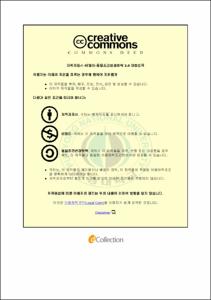초순수 제조를 위한 역삼투 공정의 유기물 제거에 영향을 미치는 인자 분석
- Abstract
- Ultrapure water (UPW) is water containing nothing but water molecule (H2O). UPW is generally used for electricity businesses such as semiconductors, memories, and LCD displays. The two target pollutants for UPW production processes are ions and organic matters with low molecular weight. To obtain UPW quality (e.g., > 18.2 MΩㆍ㎝ as resistance and < 1 ppb as total organic carbon (TOC) concentration), dozens of unit processes such as ion exchange, ultraviolet (UV) oxidization, biological treatment, and membrane processes, should be combined optimally. Therefore it is very important to decrease the number of the unit processes by adapting a multi-functional unit process. Reverse Osmosis (RO) process can be one of the multi-functional units processes to remove ions and organic matters together and this is the reason why most of RO membrane manufacturers are developing RO membranes specialized to remove organic matters. In this study, we investigate factors affecting organic natter removal by RO membranes. Bench-scale experiments were carried out using 4-inches RO elements from several manufactures. Isopropyl alcohol (IPA, molecular weight=60) was used as a model organic matter. As a results, the removal of IPA increases as permeate flux increases, while the cross-flow velocity and IPA concentration do not have much effect on the removal. Interestingly, we found that high ion rejecting membranes showed worse organic matter removals than low ion rejecting membranes, which are specialized for organic matter removal.
- Issued Date
- 2014
- Awarded Date
- 2014. 2
- Type
- Dissertation
- Publisher
- 부경대학교
- Affiliation
- 대학원
- Department
- 대학원 토목공학과
- Advisor
- 김수한
- Table Of Contents
- 1. 서론 1
1.1 연구 배경 1
1.2 연구의 기본 가설 설정 2
2. 문헌연구 3
2.1 초순수 제조기술 3
2.1.1 초순수 정의 3
2.1.2 단위 공정 5
2.1.2.1 전처리 공정 5
2.1.2.2 1차 순수 공정 12
2.1.2.3 2차 순수 공정 23
2.1.2.4 재활용(배수 회수) 공정 32
2.1.3 조합설계(반도체 제조 초순수 공정) 36
2.1.3.1 반도체 제조 초순수 공정 36
2.2 역삼투 공정의 물질 제거의 원리 38
2.2.1 역삼투 공정 38
2.2.2 제거 대상 물질 및 제거의 원리 50
3. 재료 및 방법 61
3.1 실험 재료 및 장치 61
3.1.1 초순수 제조 장치 61
3.1.2 실험대상 유기물 62
3.1.3 유기물용 막 모듈 63
3.1.4 역삼투 막 모듈 장치 64
3.1.5 TOC 분석 장치 65
3.2 실험 방법 66
4. 결과 및 고찰 67
4.1 유기물 제거능에 영향을 주는 인자 분석 67
4.1.1 IPA 농도 변화에 따른 유기물 제거효율 변화 67
4.1.2 원수 수온 변화에 따른 유기물 제거효율 변화 70
4.1.3 막 여과 유속(flux) 변화에 따른 유기물 제거효율 변화 72
4.1.4 농축수 유량 변화에 따른 유기물 제거효율 변화 74
4.1.5 막의 성능에 따른 유기물 제거효율 변화 76
4.2 막의 Flux 변화에 따른 유기물 제거능 78
4.3 유기물 제거능의 효율 향상화 방안 87
5. 결론 88
5.1 연구 결과 요약 및 토론 88
5.2 향후 연구 방향 제안 89
참 고 문 헌 90
- Degree
- Master
- Files in This Item:
-
-
Download
 초순수 제조를 위한 역삼투 공정의 유기물 제거에 영향을 미치는 인자 분석.pdf
기타 데이터 / 2.53 MB / Adobe PDF
초순수 제조를 위한 역삼투 공정의 유기물 제거에 영향을 미치는 인자 분석.pdf
기타 데이터 / 2.53 MB / Adobe PDF
-
Items in Repository are protected by copyright, with all rights reserved, unless otherwise indicated.